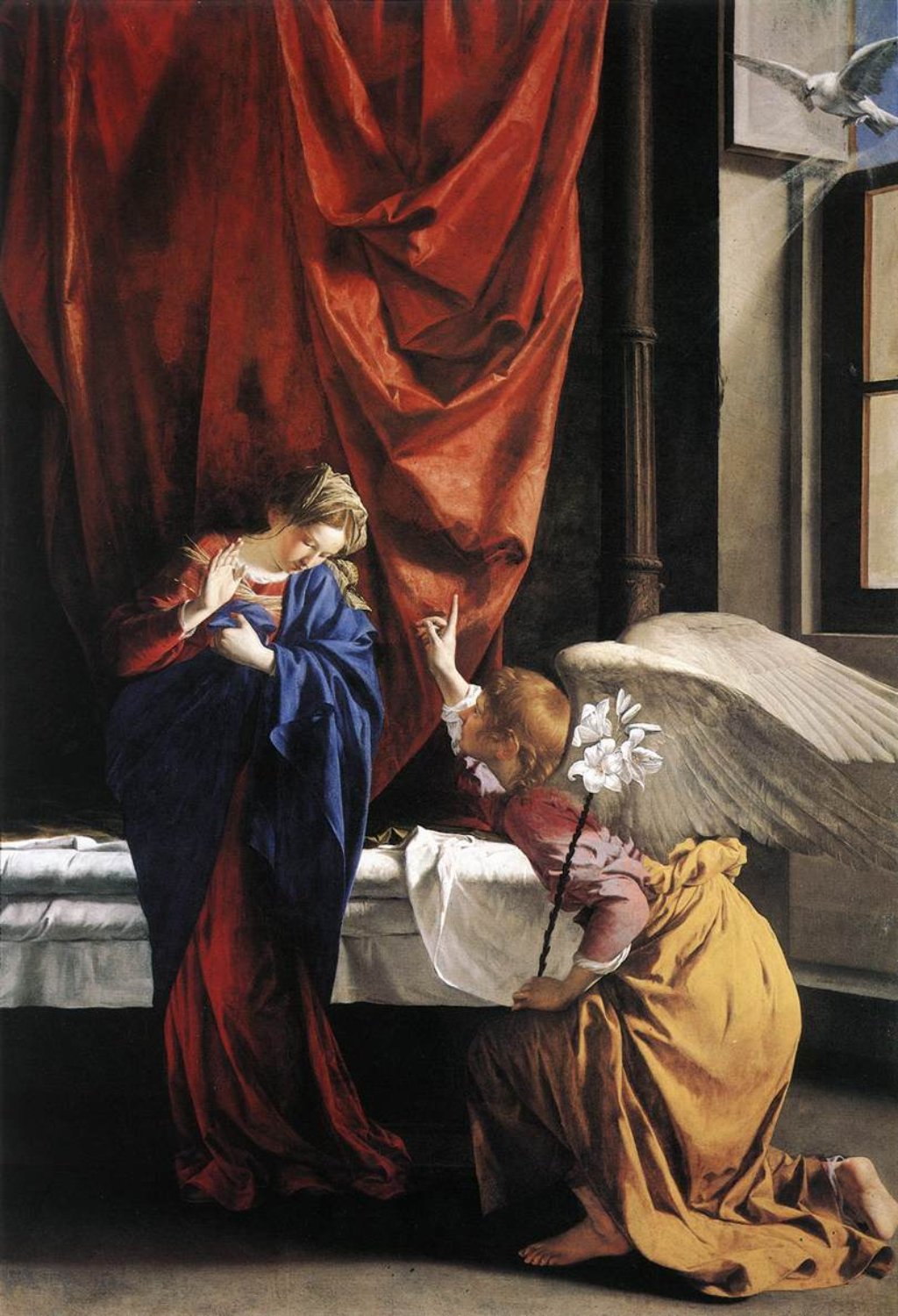
What Mary’s Fiat Teaches Us About Advent
Faith | Blessed Virgin Mary | Advent
During Advent, we are called to pray, fast, and practice almsgiving in order to not only prepare our hearts and homes for the celebration of Jesus's birth, but also for His Second Coming. Advent differs from Lent in that we are called to prepare with joy and hope; after all, we continue to sing the Alleluia throughout. It is a time of penance and festivity. How appropriate then to focus on the fiat of Mary, which set into motion the first Advent.
In Luke 1:26-38 the angel Gabriel visits Mary and foretells the birth of Jesus. "Hail, favored one! The Lord is with you," he greets her. Mary is troubled and ponders what sort of greeting that may be. There are many ways to interpret this. As a human, did she wonder if that title was deserved?
Many people wonder the same thing in their own life. There is often a fear that if we let God see our hearts in their brokenness, that He will say we are not good enough or worthy of His love. With that comes a desire to protect oneself and always hold a piece back, to not give ourselves fully. Yet God loves those parts, He already knows them, He wants to be invited into them to heal and embrace. When we are unable to see ourselves as God sees us, we keep Him at a comfortable distance. In so doing, we will never be able to fully surrender when called upon.
Mary understood who she was because she understood whose she was. Only then could she say "let it be done to me" with such confidence.
Mary said, "Behold, I am the handmaid of the Lord. May it be done to me according to your word." Then the angel departed from her.
This is translated in Latin as "ecce ancilla Domini fiat mihi secundum verbum tuum." The Latin meaning of fiat is "to make" or "to do." Mary is seen to do so without hesitation. However, I often wonder what lies the Devil whispered into Mary's ear at this time to tempt her to doubt and fear. What will people think of you? What will your betrothed do? What if he leaves you, and you have this child alone? Will this child ever have a normal life?
Mary does not pull back in fear. Rather, she remained focused on prayer and the conversation at hand. Freedom, joy, and clarity come in remaining in God's love rather than turning inward to our own anxious thoughts.

In a recent episode of the Abiding Together podcast, Sr. Miriam James Heidland challenged listeners to question when they have said no to God "out of fear bonds, not love bonds." She continues on, explaining that "fear bonds are developed out of avoidance of pain and they're developed out of fear. And so they drive us to do things to avoid pain, not to participate in true intimacy, but to avoid either having somebody leaving us, avoid somebody abandoning us, to try to get our 'needs met' in ways that we can satisfy those deep places. Versus love bonds. Love bonds are motivated by true intimacy, by gift, by self offering, by tenderness, by kindness, by truth."
What fear bonds do we have that we cling to as sources of "strength"? How can we heal those fear bonds and turn them into love bonds with Christ? Mary is seen to have relationship with God, and in that love she knows Him and believes He will act for her good when she surrenders to Him.
After Mary gave her fiat, she was in a season of waiting and anticipation. Mary would need to wait for the reaction of the man, Joseph, she was betrothed to and loved. She was waiting, along with the rest of creation, for everything to be redeemed by the Redeemer.
When Mary is found to be with child in Matthew 1:19, Joseph "resolved to divorce her quietly" so as to not bring shame to Mary. Mary is seen to not run after Joseph, to try and explain or change his mind, but to again hold back. To trust that God will make everything right. How difficult that must have been! Did Mary question whether Joseph and the Lord both saw her heart and what she was feeling during that time? Did she feel alone? Was she tempted to wrestle back control?
Trust in God's plan led to an angel appearing to Joseph and him giving his own fiat. His own "yes" to a plan far from what was likely his own.
Mary's waiting is a model for how we should live out our own waiting this Advent season. Because her waiting is an active waiting. She waited with the Lord, staying faithful and saying yes to whatever He called her to. In our own active waiting we are reminded to "be watchful! Be alert!" (Mark 13:33-37)
What is God calling us to say "yes" to this Advent season? Is it to invite Him into our hearts more, especially the most vulnerable places? Is it to surrender our plans for a different opportunity we have been given? Is it to understand the ways we attempt to gain control, and what hurts those are rooted in?
May we all have the strength and courage to live out our own daily fiats,
not only during this Advent season, but beyond.
Copyright 2020 Christie Anne Luibrand
Image: Orazio Gentileschi, The Annunciation, c. 1623, Public Domain
About Christie Anne Luibrand
Christie Luibrand, MSW, LISW is a mental health therapist turned stay-at-home mom. She currently writes about all things faith, motherhood, and wellness at HerDailyFiat.com. She spoke most recently at the National Virtual Catholic Women’s Conference 2021. Christie has been featured on Spoken Bride, The Young Catholic Woman, and the Blessed Is She blog. You can find her on Instagram at @HerDailyFiat.

